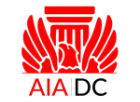What is the NFRC Rating System?
Ever wondered how to choose the best energy-efficient windows for your building projects? Well, you’re not alone. The NFRC label helps you compare. Selecting the right windows can feel like navigating a maze of technical jargon and confusing numbers. Enter the National Fenestration Rating Council (NFRC) – your new best friend in window selection.
The NFRC is an independent, nonprofit organization that provides consistent and reliable energy performance ratings for windows, doors, and skylights. Founded in 1989, its mission is to provide fair, accurate, and credible ratings to help builders, architects, and homeowners make informed decisions. Think of NFRC as the Consumer Reports for windows; it helps you compare products based on standardized performance metrics.
But why should you care about NFRC ratings? Because they ensure that the windows you choose will perform as promised, helping to keep your home warm in the winter and cool in the summer. Plus, they can significantly reduce your energy bills and contribute to a more sustainable future.
Key Components of NFRC Ratings
The NFRC rating system focuses on several key components, each measuring a different aspect of window performance:
- U-Factor: This measures how well a product can resist heat flow. The lower the U-Factor, the better the window insulates. Values typically range from 0.20 to 1.20. A lower U-Factor means less heat escapes your home, keeping you cozy and reducing heating costs.
- Solar Heat Gain Coefficient (SHGC): This indicates how well a product blocks heat from the sun. It’s expressed as a number between 0 and 1. The lower the SHGC, the less solar heat is admitted through the window. The Energy Star label helps confirm this. A lower SHGC helps keep your home cooler in hot climates.
- Visible Transmittance (VT): This measures how much visible light is admitted through a window. Higher numbers mean more natural light enters your space, reducing the need for artificial lighting and creating a brighter indoor environment.
- Air Leakage (AL): This measures how much air will enter a room through the window. It’s measured in cubic feet per minute (cfm) per square foot of window area. Lower AL values indicate better performance, meaning less air leakage and better insulation.
The Importance of NFRC Ratings in Architecture
Ensuring Energy Efficiency
Choosing windows with the right NFRC ratings is crucial for energy efficiency. The U-Factor and SHGC are particularly important here. For instance, if you’re working on a project in a cold climate, you’ll want windows with a low U-Factor to keep heat from escaping. Conversely, in a hot climate, a low SHGC will help keep the interior cool by blocking solar heat.
By selecting NFRC-rated products, architects and builders can ensure their designs meet stringent energy codes and standards by referring to the Energy Star label and NFRC label helps you compare. This not only enhances the energy performance of windows but also contributes to the overall sustainability of the building, making use of window and door energy performance ratings. Plus, energy-efficient windows reduce reliance on heating and cooling systems, leading to significant energy savings.
Enhancing Comfort and Performance
The right windows do more than just save energy; they also enhance comfort and performance. A window with a high Visible Transmittance (VT) allows plenty of natural light into a space, reducing the need for artificial lighting and creating a pleasant, well-lit environment. This is particularly important in spaces like offices and schools, where natural light can boost productivity and mood.
Meanwhile, Air Leakage (AL) ratings help ensure that windows provide a tight seal, preventing drafts and maintaining consistent indoor temperatures. This contributes to a more comfortable living or working environment, free from cold spots and temperature fluctuations.
How NFRC Ratings Are Determined
Testing Procedures
To determine these ratings, windows undergo rigorous testing in controlled laboratory settings. These tests simulate real-world conditions to provide accurate and reliable performance data, ensuring the window ratings are explained thoroughly.
U-Factor tests involve measuring the heat transfer through the window at different temperatures, while considering the energy star label tells you about efficiency. SHGC tests assess how well the window blocks solar radiation. Visible Transmittance (VT) is measured by shining light through the window and recording how much passes through, and Air Leakage (AL) is tested by exposing the window to a pressure difference and measuring the resulting airflow, as described in window ratings.
These standardized tests ensure that all products are evaluated under the same conditions, providing fair and comparable results.
Certification Process
Once testing is complete, the data is reviewed by independent laboratories accredited by the NFRC. If the product meets the required standards, it is certified and given an NFRC label. This label is your assurance that the window has been tested and rated according to rigorous criteria.
The certification process involves multiple steps, including initial testing, ongoing quality control, and periodic re-evaluation, often following guidelines given by the Efficient Windows Collaborative. This ensures that the products continue to meet NFRC standards over time, providing consistent performance and reliability.
Reading and Interpreting NFRC Labels
Breakdown of the Label
An NFRC label contains a wealth of information, but it’s easy to read once you know what to look for. Here’s a quick guide to understanding each component:
- U-Factor: Located near the top of the label, this value indicates the window’s insulation performance. Remember, the lower the number, the better. The Energy Performance Label can provide more insight.
- Solar Heat Gain Coefficient (SHGC): This is typically found next to the U-Factor. A lower SHGC means less heat from the sun is admitted.
- Visible Transmittance (VT): This value shows how much visible light passes through the window, as detailed by the energy performance label. Higher numbers mean more natural light.
- Air Leakage (AL): Sometimes included on the label, this value indicates the rate of air infiltration. Lower values signify better performance.
Below is an example table from an NFRC label:
| Component | Value | Interpretation |
|---|---|---|
| U-Factor | 0.30 | Good insulation, less heat loss |
| SHGC | 0.25 | Effective in blocking solar heat |
| VT | 0.50 | Allows ample natural light |
| AL | 0.1 | Excellent seal, minimal air infiltration |
Making Informed Decisions
By understanding and comparing these values, you can make informed decisions about which windows are best for your project. For example, if you’re working on a building in a sunny climate, you might prioritize a low SHGC to reduce cooling costs. The Energy Star label can guide you in this choice. Alternatively, in a colder climate, a low U-Factor will help keep the building warm and reduce heating expenses.
Consider the following when comparing windows:
- Climate Zone: Select windows based on the predominant weather conditions.
- Building Orientation: Southern and western exposures may benefit from lower SHGC to minimize heat gain.
- Usage: Office spaces might prioritize higher VT for better natural lighting.
NFRC Ratings and Building Codes
Compliance with Energy Codes
Many building codes now require windows to meet specific NFRC ratings to ensure energy efficiency. For instance, the International Energy Conservation Code (IECC) sets minimum performance criteria for windows based on climate zones. By choosing NFRC-rated products, architects and builders can ensure compliance with these codes and avoid potential issues during inspections.
Compliance with energy codes not only meets regulatory requirements but also enhances the overall energy performance of the building, leading to lower energy bills and a reduced environmental footprint.
Incentives and Rebates
In addition to meeting energy codes, using NFRC-rated windows can make you eligible for various incentives and rebates. Many government and utility programs offer financial benefits for installing energy-efficient products. These incentives can help offset the initial cost of high-performance windows, making them more affordable and attractive for both residential and commercial projects.
For example, Energy Star® certified windows, which are rated by the NFRC, often qualify for rebates and tax credits. These programs vary by location, so it’s worth checking with local utility companies and government agencies to see what’s available.
The Future of NFRC Ratings
Innovations and Trends
The world of window technology is constantly evolving, and the NFRC rating system is keeping pace. Innovations in materials and manufacturing processes are leading to windows with even better performance characteristics. For instance, advancements in low-emissivity (Low-E) coatings and gas-filled insulating glass units are resulting in windows with lower U-Factors and higher SHGC ratings.
Looking ahead, the NFRC is exploring new ways to rate and label products to provide even more detailed information to consumers. This includes considering factors like dynamic glazing, which can change its properties based on environmental conditions, and integrating smart technology into windows for better energy management.
Global Impact
While the NFRC is primarily focused on the United States, its standards and rating system are gaining recognition worldwide. Many countries are adopting similar approaches to ensure energy efficiency and performance in their fenestration products.
Comparing NFRC ratings with other international systems, such as the European Union’s CE marking or Australia’s Window Energy Rating Scheme (WERS), reveals a common goal: improving the energy performance of buildings globally. By harmonizing standards and sharing best practices, the NFRC and its international counterparts are contributing to a more sustainable future.
Conclusion
Recap of Key Points
Understanding NFRC ratings is essential for choosing the right windows, doors, and skylights for your projects. These ratings provide reliable information on key performance metrics like U-Factor, SHGC, Visible Transmittance, and Air Leakage. By using NFRC-rated products, you can enhance energy efficiency, improve indoor comfort, and comply with building codes. Condensation performance is also a key factor.
Final Thoughts
In today’s world, where energy efficiency and sustainability are more important than ever, making informed choices about windows can have a significant impact. The NFRC helps you navigate the complexities of window performance, ensuring you select products that meet your needs and contribute to a greener future. So, next time you’re considering new windows, look for the NFRC label – it’s your key to better performance and greater energy savings.



